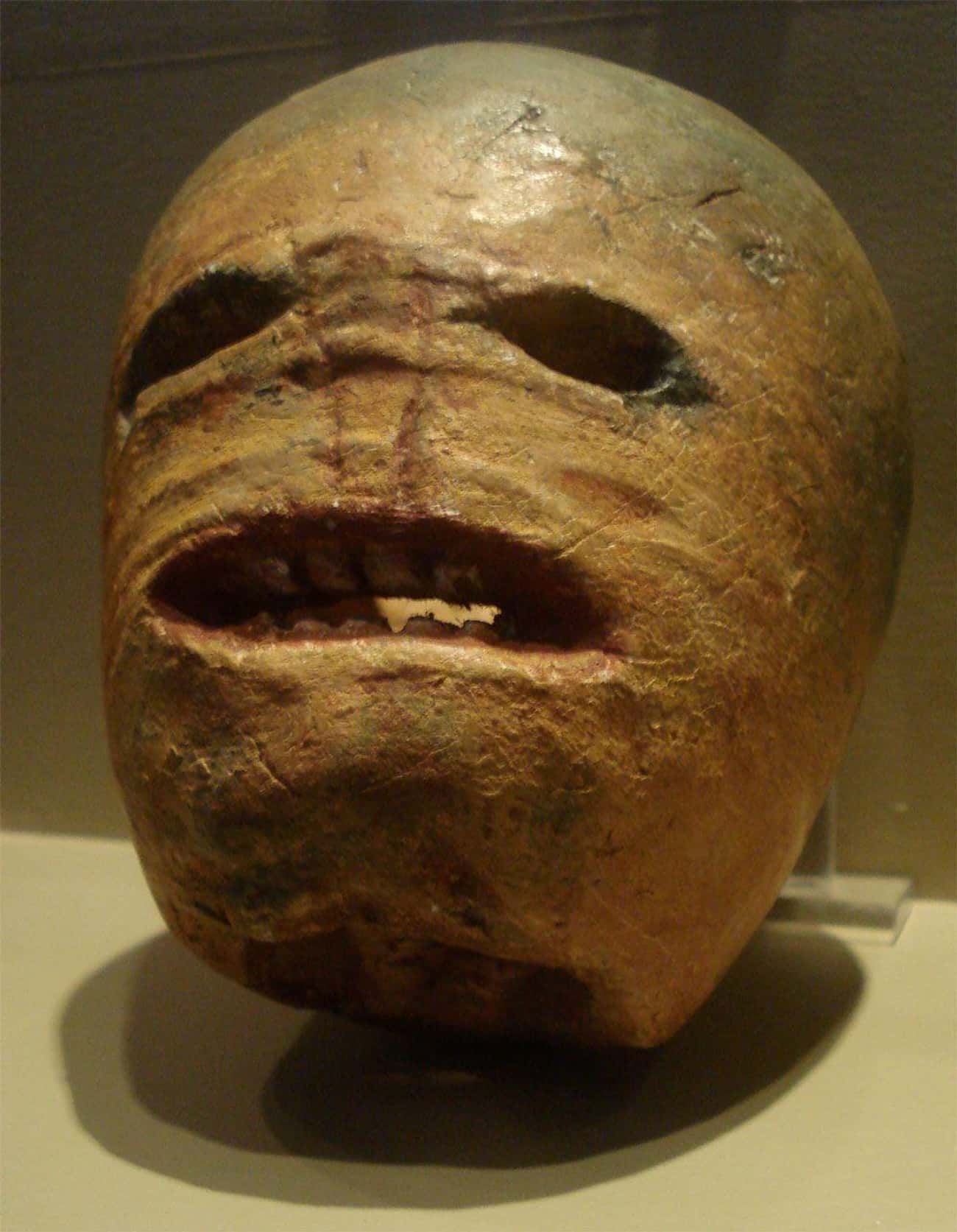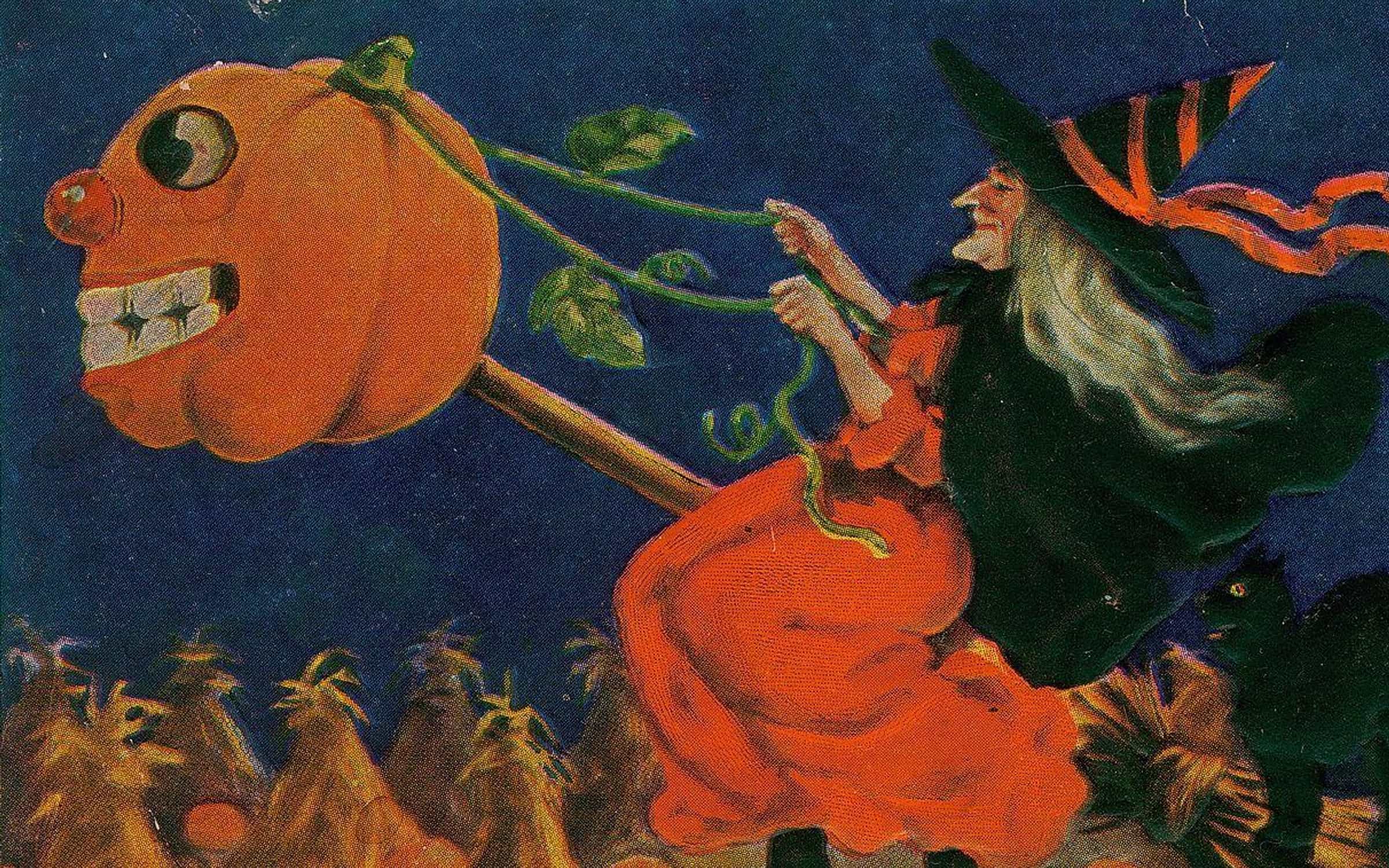As Halloween approaches, there’s no shortage of decorations for sale, usually covered with Halloween symbols that we all recognize, even if we don’t know where they come from.
1. Jack-o’-Lanterns

Though you probably think of jack-o’-lanterns as synonymous with pumpkins, they actually find their origins with the humble turnip and the creepy story of Stingy Jack. According to the Irish folk tale, Jack invites the devil for a drink with him and, not wanting to pay, convinces the devil to turn himself into a coin to pay for the drinks. Instead of spending it, Jack keeps the coin in his pocket next to a cross, only freeing the devil when the devil promises not to claim Jack’s soul when he passes. When Jack passes, God gives him a burning coal to light his way. Jack puts this coal into a hollowed-out turnip to light his way and is forced to wander the Earth forever, a doomed soul. Irish people would put jack-o’-lanterns outside their door to frighten away Stingy Jack and any other wandering spirits. When they immigrated to America, pumpkins (native to the New World) were used to keep their tradition alive.
2. Black Cats

While in some folklore black cats have been considered lucky or even a sign of prosperity, their association with witchcraft is much more widespread and links these creatures to Halloween. The idea that cats are “witches’ familiars is found in writings and trial reports of the 16th century.” People so feared their demonic connotation that groups of cats were often destroyed across Europe.
3. Witches

If there’s one human (well, human-ish) symbol of Halloween, it’s the witch riding away over a full moon. Witches, especially in the Christian view originating in the Middle Ages, were thought to be in league with the devil. Their casting of spells and connection with the other world make them a natural fit for Halloween and its predecessor, Samhain. But how did they become so ubiquitous around this holiday?Some think it was a tactical move by the greeting card industry. In any case, a bubbling witch’s cauldron and wart-covered old woman are sure to be in any haunted house you visit this year.
4. Costumes

According to beliefs surrounding the pagan holiday Samhain, this was the time of year where the “veil” between this world and the world of spirits was the thinnest, so you were most likely to engage with the departed. And that could be very bad news.So, they would wear costumes, often made of animal heads and skins, to trick any ghosts they might run into. A lot scarier than a nurse costume, for sure.
5. Broomsticks

With witches aplenty, it’s probably no surprise that we find broomsticks as a Halloween symbol. But why are they meant to be a witch’s travel method of choice? Well, it’s a little dirty. Witches were thought to have applied hallucinogenic “flying ointment” – um, internally – with a wooden staff. An account from 1324 of a witch on trial says that “they found a pipe of ointment wherewith she greased her staffe, upon which she ambled and galloped through thick and thin.” Though for the next few hundred years they were described as flying on anything from a cupboard to a fork, it seems to be the wooden staff imagery that really lasted.
6. Bats

Bats are one of the most common Halloween symbols today, but their connection with the holiday is multi-layered, dating right back to its roots.A lot of vampires folklore states that vampires can turn into bats, giving them an extra spooky edge. And folklore aside, bats are pretty scare-worthy. Vampire bats live off the blood of animals – and sometimes people – and drink your blood for up to 30 minutes. Definitely Halloween material.
7. Ghosts

It’s no surprise that ghosts have become a major Halloween symbol. Historically, Samhain was thought to be the time where the spirit and living worlds were the least separated, so you could run into a ghoulish spirit. But they weren’t necessarily the friendly, Casper-esque ghosts we see today.Though the presence of spirits was supposed to make the future easier to predict, pagans considered these departed spirits no laughing matter.
8. Skeletons

The dancing skeletons you’re so used to seeing at Halloween may not seem so scary – they’re often downright friendly – but when you start to really think about that imagery, things get a little darker. Halloween has its roots in the pagan festival Samhain, the feast of the dead. And it doesn’t get more dead than skeletons. There’s a history of displaying skulls all the way back to Aztec skull art, comprised of everything from racks of skull to skull necklaces, and even earlier, back to 7200 BCE. Skulls are also a major symbol in the Mexican Dia de los Muertos holiday.
9. Spiders

These eight-legged creatures with their web-weaving skills have an extensive history in mythology and folklore. In fact, the word “arachnid” derives from the story of Arachne, a mortal woman with a gift for weaving whom Athena turns into a spider in Greek mythology. Because of their web-making skills, spiders have long been thought to be weavers of fortunes, as far back as being associated with the ancient Egyptian goddess Neith.So why do we find them around Halloween? Like black cats, they are also thought of as “familiars,” or companions, of witches.
10. Fangs

Pointy-toothed smiles appear in Halloween jack-o’-lanterns and costumes, mostly in allusions to vampires. Vampire stories come from a range of cultures – from the Chinese jiangshi to the Mesopotamian ekimmu – and stories of what we think of as vampires originated as early as 11th-century Europe. Of course, the most famous vampire, Dracula, is a fictional character, but some believe he is based on Vlad the Impaler, or Vlad III, a medieval Romanian prince. In the story, Count Dracula is described as having pointy, very white teeth (presumably for all that blood drinking), which is where we get the fangs we see today.

